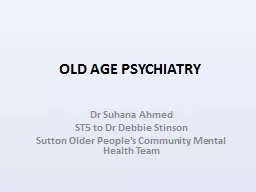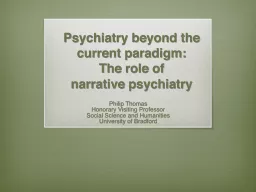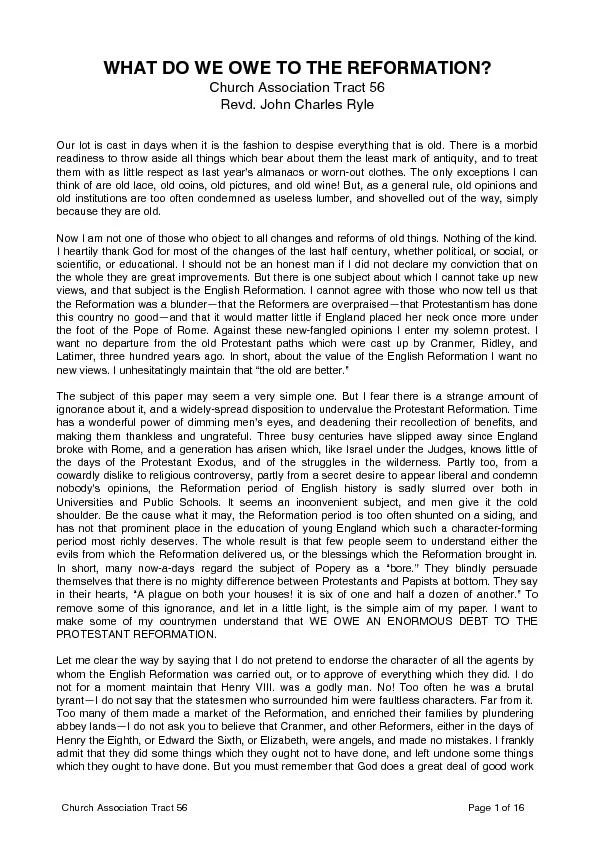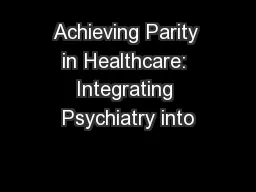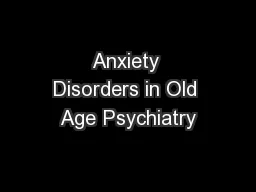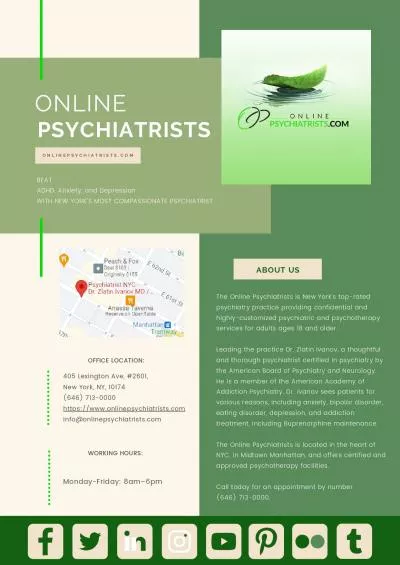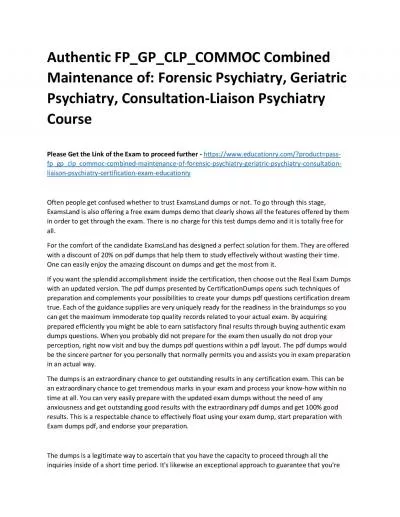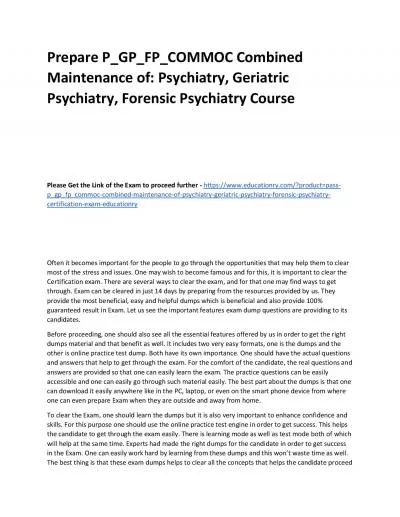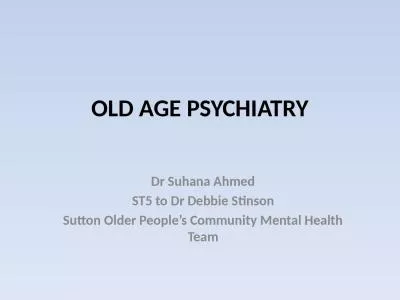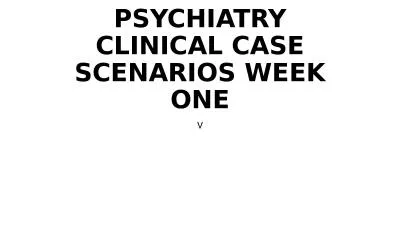PPT-OLD AGE PSYCHIATRY
Author : alida-meadow | Published Date : 2017-05-24
Dr Suhana Ahmed ST5 to Dr Debbie Stinson Sutton Older Peoples Community Mental Health Team Agenda What is it What did we do What do we do The team Referrals Memory
Presentation Embed Code
Download Presentation
Download Presentation The PPT/PDF document "OLD AGE PSYCHIATRY" is the property of its rightful owner. Permission is granted to download and print the materials on this website for personal, non-commercial use only, and to display it on your personal computer provided you do not modify the materials and that you retain all copyright notices contained in the materials. By downloading content from our website, you accept the terms of this agreement.
OLD AGE PSYCHIATRY: Transcript
Download Rules Of Document
"OLD AGE PSYCHIATRY"The content belongs to its owner. You may download and print it for personal use, without modification, and keep all copyright notices. By downloading, you agree to these terms.
Related Documents

